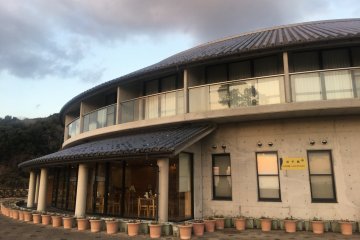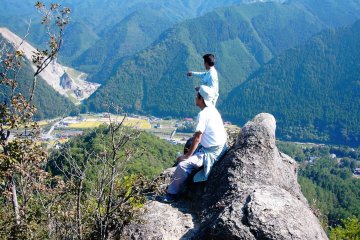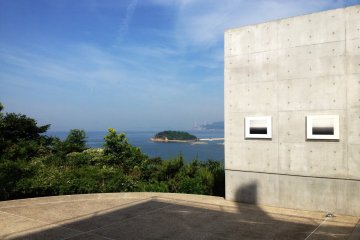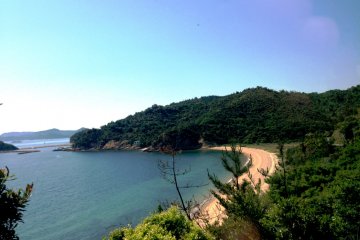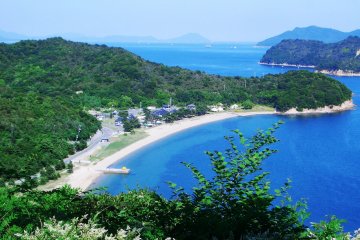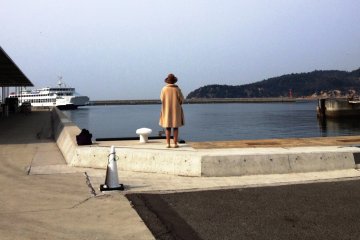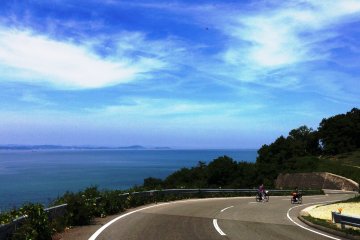Japan. What images come to your mind when this country is mentioned? Geishas, Sumo, perhaps a scene from the movie “Lost in translation”, mesmerised by the intricacies of an ikebana floral arrangement? Well, at Setonaikai National Park, you will see none of this. Still interested?
A peaceful way to prepare for this journey to nature’s wonderland is to take a boat trip from Kobe to Takamatsu. You literally be still as you meditate on the shoreline while the ferry gets ready to depart. For overseas visitors, a bonus is that you can get to Kobe directly from Kansai International Airport by a scenic cruise over Osaka Bay, though this ferry arrives at Kobe Airport, and you will need to get a transfer to the other ferry terminal for the Takamatsu ferry. If you have a need for speed, the Okayama bullet train is the go, made much more affordable with the JR Kansai wide rail pass.
If you want to go somewhere closer, they even have something resembling the “airport layover” option. From Kansai Airport it is just over an hour away to Kada port in Wakayama prefecture, on the Eastern boundary of this national park. For example, even if you are stopping over from Los Angeles to Asia, you could magically wish away your stiffness from a short stretch in Wakayama. Once you are at Kada port, take a twenty minute ferry to the Tomogashima Islands. You can camp or go hiking on Okinoshima, whose abandoned fort and overgrown vegetation looks something straight out of Laputa, the floating island in the movie Castle in the Sky.
Actually, you can’t see the eastern and western boundaries of this vast national park at once, it is simply too large, even from a plane. Setonaikai National Park wasn’t originally this expansive, but over time, it just got bigger and bigger, like some kid that collected every candy in the store. From the famous red torii in Miyajima, one of the top three scenic views in Japan, to the Naruto whirlpools near Tokushima, if you can think of anything worthwhile seeing in the Seto Inland Sea, then chances are it is part of the National Park. What other national park covers eleven prefectures, making it Japan's largest national park, as well as the envious distinction of having some of the sunniest spots in Japan, being sheltered between two mountainous landmasses, creating a rain shadow. Takamatsu for example, has 216 days or 2054 hours of sunshine a year, even exceeding Okinawa.
At the same time, the natural wonders here may just creep up on you. When I checked in at Inujima, they asked me to watch out for pigs that swim across the strait. It is hard to imagine these boisterous animals running amok in this island of aged wooden cottages and bamboo groves, but then again, this is not the domain of the geisha. Once all the day trippers are gone, it is the animals that take over the island. Just look up at sunset, and the crows and kites will tell you in no uncertain terms that this place is theirs. This island is a like a safari in disguise. If you can, stay overnight at Inujima, Teshima or one of the smaller islands, and get close to nature. You have to get out on foot or by bike to really experience it. For the more adventurous, go diving or sailing in tranquil waters, and keep an eye for the Finless Porpoise, looking almost like a dugong, or the Japanese Horseshoe Crab, looking more like a living fossil.
Once back on land, you might even start to see Japan in a different light. The richness of the seas, as well as its beauty in every season, will start to get under your skin. These are the same places that have inspired poets and artisans for centuries, even before the national park got its name. It is no wonder that many farmers and craft makers are still call these eleven prefectures home. From the indigo growers in Harima, to the clay tilers in Awaji island, Setonaikai is a place that sustains and nurtures respect and connection in so many different dimensions.






